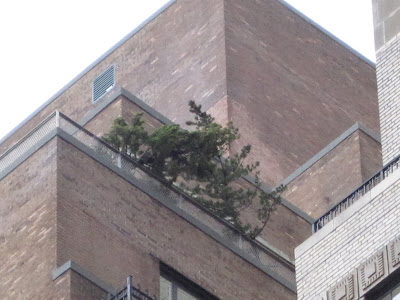 I know this is a city gardening blog. But since I split my time between rural PA and Manhattan, I am constantly reminded of the differences between the two locations, despite the fact that they're separated by a mere 90 miles.
I know this is a city gardening blog. But since I split my time between rural PA and Manhattan, I am constantly reminded of the differences between the two locations, despite the fact that they're separated by a mere 90 miles.During the growing season, my PA garden is at least 2 weeks behind the gardens in NYC. Frosts linger longer and start earlier, and of course I don't find too many deer munching the Rhododendrons on the 20th floor. This week, while O.E. watched robins on her rooftop, we shovelled out from under 40+ inches of snow. And by we, I mean Michael.

34 of those inches fell in a single blast, so even though the roads were clear, our driveway wasn't plowed. Which means we lugged two cats and four heavy canvas bags of absolute necessities down our 86 yard driveway. (note to self: increase aerobic workout, your endurance needs work!)

We have hunkered down, stoking the wood stove and pulling liberally from the chest freezer. No robins here, only wood peckers, tit mice, and chickadees, grateful for the bird feeder. And squirrels. Enough to keep the cats entertained, but not enough to convince Sisko to venture off the deck.
Hard to believe that in a few hours we'll be back in Manhattan, land of plowed streets, swelling buds, and early robins.





























